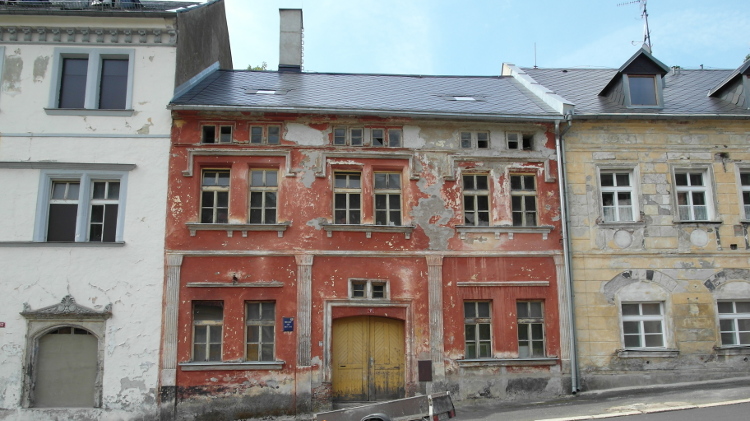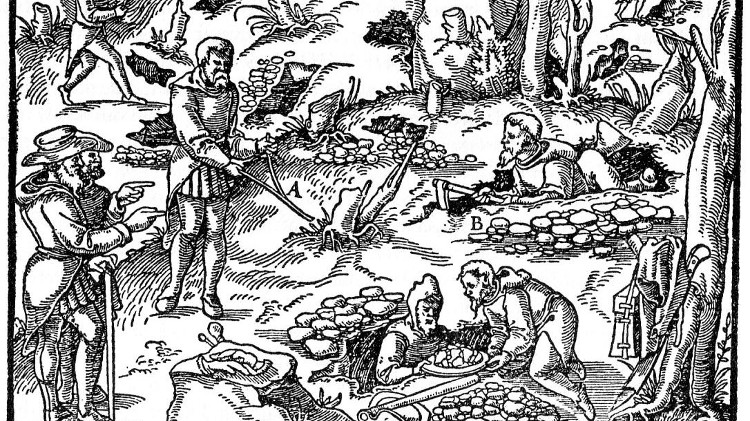A British mine explodes under a German fortification at Hawthorn Ridge on July 1, 1916, the first day of the Battle of the Somme. Ernest Brooks, Imperial War Museum, London
In the First World War trenches cleaved Europe from the North Sea to Switzerland. While the battlefield above ground was static, a secret subterranean war raged underground.
The British Army began to form specialist army units of trained tunnellers in 1915, initially recruiting men from poor coal mining communities in Britain. Their job was to create a labyrinth of long underground tunnels that extended under enemy lines and could be packed with explosives, and to dig ‘camouflets’, smaller mines used to collapse enemy tunnels. They were also tasked with building extensive networks of tunnels behind Allied lines, allowing for undetected movement of men and supplies.
Faced with growing demand for skilled miners, the British government appealed to Canada to raise tunnelling units, or ‘companies’, in September 1915. The first was mobilised in Pembroke, Ontario and recruited men from mining centres in Ontario, Quebec, Nova Scotia, and New Brunswick. Almost 300 men left Saint John on Jan. 1, 1916. The second, comprised of men from Alberta and British Columbia, left Halifax three weeks later. The third was formed of Canadian miners who had joined the armed forces and were already fighting in Europe.
The busiest year for this type of tunnel warfare was 1916. The British blew 750 offensive mines and the Germans blew 696. The British army had roughly 25,000 tunnellers along with 50,000 infantry who worked permanently alongside them doing unskilled tasks, from ventilating tunnels to ferrying equipment. The latter were often ‘bantams,’ men who did not meet the height requirements for regular units.
Miners did not have to meet the age requirements for regular infantry and could be as old as 60. They were often paid more than soldiers to match their salaries at home, a source of contention for many.
Added to the hazards of early 20th century mining, the miners were exposed to the particular horrors of underground warfare. These included enemy explosives, asphyxiation, trench foot, drowning, entombment, cold, cramp and the threat of unearthing German soldiers digging in the other direction and having to fight hand-to-hand to stay alive. Mining casualties were high; one tunnelling company had 16 killed, 48 sent to hospital and 86 minor cases treated at the shaft head in a six-week period.
Tunnellers worked by candlelight and operated in silence to avoid detection. Allied miners used the ‘clay kicking method,’ a technique borrowed from sewer, road and railway works in England. In each team there would be a ‘kicker’ who would lie on his back on a wooden cross and use his legs to work a finely sharpened spade known as a ‘grafting tool’ into the rock face. A ‘bagger’ would then fill sandbags with soil, and a ‘trammer’ would transport the debris out of the gallery on small rubber-tyred trolleys on rails. He would return with a trolley stacked with timber. The wood was for the walls, which would be erected without nails or screws in order to maintain silence; miners relied on the pressure of the swelling clay to hold it in place.
The clay kicking method was faster and quieter than digging by hand. The method was never discovered by the Germans, who relied on loud mattocks. Another advantage held by the Allies was the use of cylindrical, watertight steel shafts to cut through layers of quicksand, otherwise known as ‘tubbing’. These were sunk through the wet strata (‘schwimmsands’) and into to the dry clay below. This allowed the British to delve into places the Germans believed to be impossible.
Tunnels would start at the bottom of shafts and could be as deep as 100 feet. All were built on a slight uphill gradient to keep them as dry as possible.
The Battle of Vimy Ridge in April 1917, “Canada’s most celebrated military victory,” would not have been possible without extensive military mining. In preparation, 20 kilometres of tunnels were built to house 24,000 troops, ammunition, foot traffic, wounded soldiers and supplies.
Mining warfare culminated two months after Vimy at the Battle of Messines. Alongside their British, Australian and New Zealander counterparts, the 1st and 3rd Canadian tunnelling companies had spent months laying 25 enormous mines under the Messines ridge, a German stronghold in Belgium. The mines were charged with over 937,400 pounds of explosive and detonated in the early hours of the morning of June 7th. Ten thousand German soldiers were killed and the blast was the largest man-made explosion in history at the time. It was so loud that British Prime Minister David Lloyd George claimed to have heard the explosion in London.
Six mines were not used, four because positions above ground had shifted, one because the tunnel flooded, and another was discovered by the Germans. One fired 38 years later in a thunderstorm and killed a cow. Five remain unexploded in the ground. One of the largest, packed with over 50,700 pounds of high explosives, lies directly under a Belgian farm.
After Messines, the war became more mobile. Tunnellers were employed less for underground warfare and increasingly above ground as field engineers.




